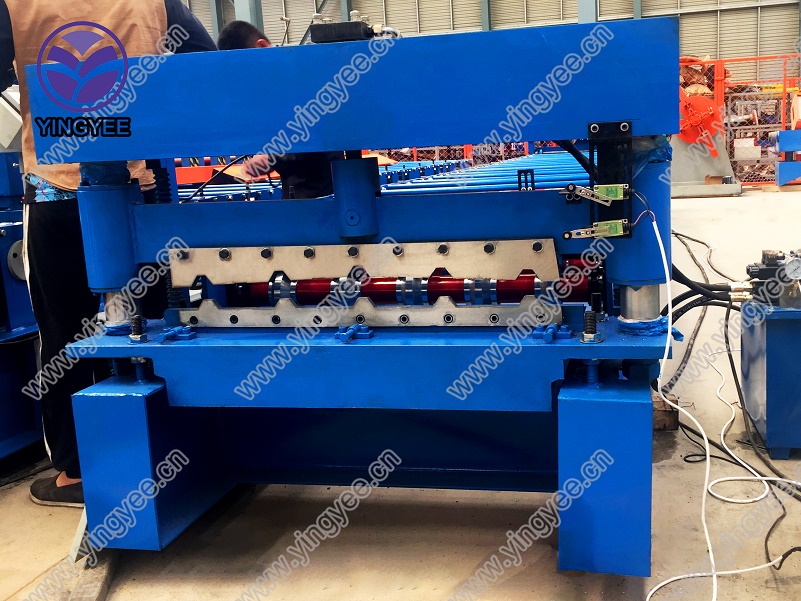
Manual Size Adjustment of Stud and Track Roll Forming Machines Using Spacers
Roll forming machines are integral to the construction and manufacturing industries, allowing for the efficient production of various metal profiles, such as studs and tracks used in steel framing. Among the different types of roll forming equipment, stud and track roll forming machines stand out due to their capability to create lightweight yet sturdy metal structures. However, as projects demand different specifications, the ability to change the size of the profiles produced becomes essential. One common method to achieve this change is through the manual adjustment of spacers.
Understanding Roll Forming Machines
Roll forming is a continuous bending operation in which a long strip of metal, typically coiled steel, passes through a series of rollers that progressively shape it into a desired cross-sectional profile. Studs and tracks are often produced in varying sizes to fit different construction needs, from residential to commercial applications. Roll forming machines are designed to be flexible, allowing manufacturers to produce multiple profiles efficiently.
Manual Size Adjustment Process
Changing the size of profiles produced by a stud and track roll forming machine can be done manually by adjusting the spacers between the rollers. This method is practical, cost-effective, and enables operators to customize the product based on client specifications or project requirements.
Step 1 Shut Down and Safety Precautions
Before initiating any size change, it is crucial to power down the machine and follow safety protocols. This includes ensuring that all moving parts have stopped and that the machine is disconnected from the power source to prevent accidental starts during adjustments.
Step 2 Identify Required Size Change
Operators should review project specifications to determine the new size for the profiles. This assessment will guide the necessary adjustments, including the distances between rollers and the width of the spacers needed for the desired profile.

Step 3 Accessing the Rollers
The next step involves accessing the roller assembly. This will typically require the removal of covers or guards that protect the machine’s internal mechanisms. Proper tools, such as wrenches and screwdrivers, are necessary for this task.
Step 4 Modifying the Spacers
Once the rollers are accessible, operators can begin to adjust the spacers. Spacers are crucial components that determine the distance between rollers and indirectly affect the thickness and width of the formed profiles. Depending on the required new dimensions, existing spacers can be moved, or new ones can be installed.
1. Loosening the Existing Spacers Operators must carefully loosen the bolts or screws holding the spacers in place. 2. Adjusting Length and Position The specific adjustment will depend on the desired profile size. If a wider profile is required, spacers can be moved further apart or replaced with thicker ones.
3. Securing the Changes Once the new position is determined, the spacers must be securely fastened back in place to ensure that they will not shift during operation. This step is crucial for maintaining accuracy in the roll forming process.
Step 5 Testing and Calibration
After adjustments are made, it is essential to conduct a trial run of the machine. This involves running a small batch of material through the machine to verify that the new dimensions are accurately produced. If the results are unsatisfactory, further adjustments may be necessary.
Conclusion
The manual adjustment of stud and track roll forming machines using spacers allows manufacturers to cater to varying project specifications efficiently. Although the process can be time-consuming, it empowers operators to maintain flexibility in their production lines. A thorough understanding of the machine components, safety protocols, and the adjustment process ensures that manufacturers can adapt to client needs while continuing to produce high-quality profiles. As the construction landscape evolves, the ability to pivot quickly and effectively in the face of changing demands remains a competitive advantage in the manufacturing sector.